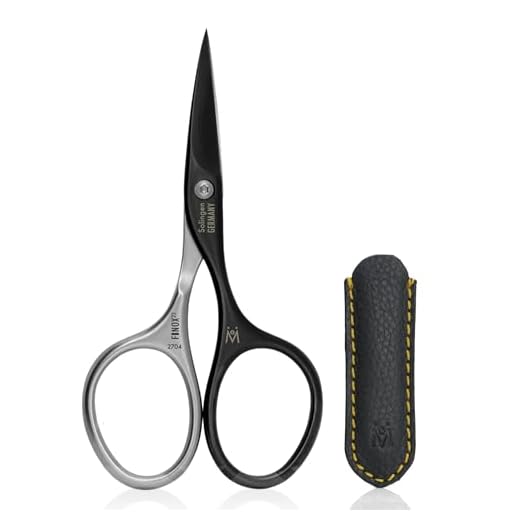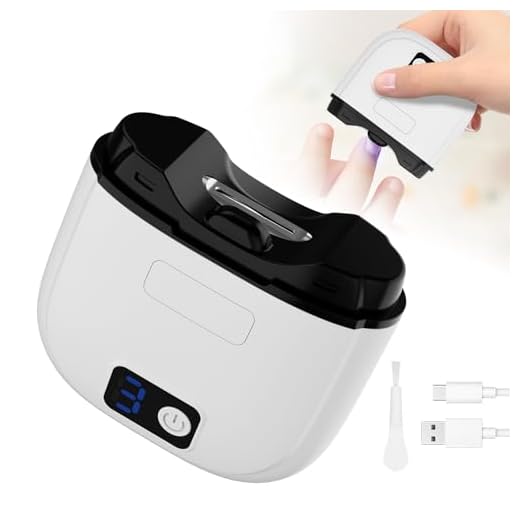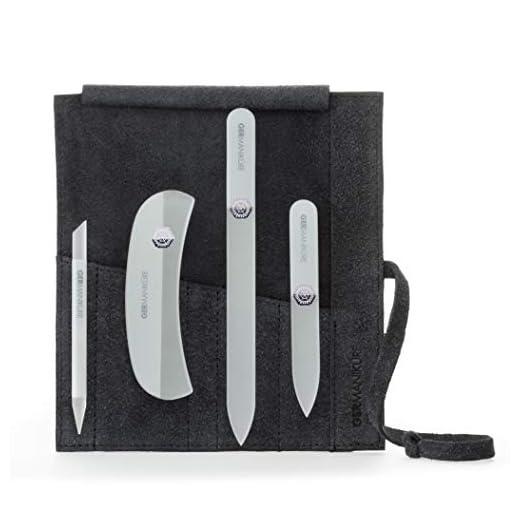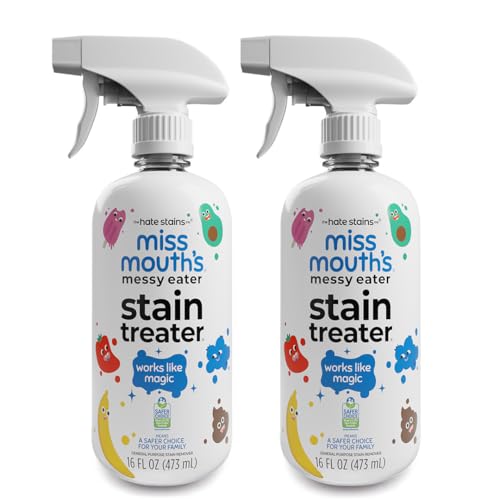

U.S. rule: Transportation Security Administration (TSA) lists metal manicure trimmers among permitted items in cabin baggage. Hand scissors are allowed only if blade length from pivot to tip is 4 inches (10.16 cm) or less. Store cutting tools folded or in a sheath and place them in a personal item or clear pouch to speed screening.
International regulations differ: some airports and carriers impose stricter limits or outright prohibit sharp grooming cutters in the aircraft cabin regardless of size. Always consult the departure and transit airport security pages and your airline’s prohibited-items list for the specific route and any connecting flights.
Practical recommendations: for multi-leg international itineraries, stow grooming cutters in checked baggage when permitted; otherwise use disposable emery boards or travel nail files inside the cabin. For battery-powered trimmers, carry the device in cabin baggage and keep spare lithium batteries protected in their original packaging or taped terminals–spares are generally not permitted in checked bags.
At the checkpoint, present grooming tools separate from other items if requested and accept that screening officers may confiscate items at their discretion. When in doubt, verify with the departing airport’s security authority before arriving at the terminal.
Manicure tools in cabin baggage: rules and advice
TSA permits small manicure nippers in cabin baggage provided the item does not include a separate knife blade; if the tool is part of a multi-tool with a blade, place it in checked baggage.
US specifics and size limits
U.S. Transportation Security Administration: metal grooming tools with cutting edges used for fingernail maintenance are allowed through security. Scissors remain permitted if blade length is under 4 inches (≈10 cm) measured from the pivot. Any device that contains a folding or fixed knife blade is treated as a prohibited item for onboard carriage.
Packing and cross-border advice
Use a protective sheath or wrap sharp edges with tape, put the item in a clear toiletry pouch for quick inspection, and keep it in an accessible compartment. Check both the departure and destination airport or airline web pages before travel – several countries and carriers impose stricter rules than the U.S.; when in doubt, place the tool in checked baggage or leave it at home to avoid confiscation. If security asks during screening, present the item separately and answer questions briefly.
TSA and US airport rules for manicure tools in cabin baggage
Recommendation: keep small manicure trimmers, metal files and emery boards in an outer compartment of your cabin bag to speed visual inspection; disposable razors and single-piece grooming trimmers are allowed during screening.
Federal screening rule: scissors are permitted only if blade length is less than 4 inches (measure from the pivot point to the tip). Items with cutting edges 4 inches or longer are typically prohibited from the cabin and must be placed in checked baggage. Measurement precision: use a ruler along the blade from the pivot to the very tip – rounded numbers like “4 in / 10.16 cm” are what TSA uses.
Multi-tools and manicure sets that include exposed blades or shears: if any cutting edge exceeds 4 inches, store those tools in checked bags. Spring-loaded or enclosed grooming implements without exposed sharp edges normally pass screening, but final determination rests with the TSA officer at the checkpoint.
Practical steps: pack grooming items where they are visible without digging, remove suspicious or oversized pieces before inspection to avoid delays, and review your airline’s written policy before travel since some carriers impose stricter limits. If an item is denied at the checkpoint options include placing it in checked baggage, returning it to a vehicle, or using on-site mailing services.
For durable options suited to festival travel see best luggage for burning man. For suggestions on nearby attractions during transfers, check best aquarium in missouri.
International and connecting-flight restrictions to verify before travel
If your itinerary includes an international connection, place any manicure trimming tool in checked baggage unless every airline and each country’s security explicitly permits it in the cabin.
Checklist before departure
- Review the prohibited-items page for every airline on the ticketed segments (including regional partners and codeshares).
- Consult the civil aviation authority of departure, each transit point and destination (examples: UK CAA, EASA, Transport Canada, CASA, CAAS) for published cabin restrictions.
- Check the departing and transit airports’ security/FAQ pages – some airports publish stricter local screening rules than the national regulator.
- When in doubt, contact the airline’s customer service and request written confirmation (email screenshot) that the grooming tool is allowed in the cabin for every flight leg.
- Prefer checked containment for connections that cross multiple jurisdictions or use different carriers under separate tickets; checked placement avoids repeated screening risk.
At transit and security checkpoints
- Expect re-screening after a terminal change or if you pass through immigration; an item permitted at origin may be barred at a transit checkpoint.
- If an item is confiscated, request a written receipt from the checkpoint; most airports will not return items after departure and refunds are unlikely.
- Pack grooming devices in a protective case to reduce the chance of being flagged as unsafe; remove any exposed cutting edges where possible.
- For multi-ticket itineraries where you collect checked bags in transit, confirm whether you must clear security again and plan containment accordingly.
- If carrying a replacement in checked baggage is not possible, consider mailing the item to your destination ahead of travel or purchasing locally to avoid loss at security.
Allowed sizes, blade types and how to check your trimmers meet requirements
Keep grooming trimmers with blades shorter than 4 inches (10.16 cm measured from the pivot point to the blade tip) in cabin baggage; exposed fixed blades, straight razors and any blade exceeding 4 inches should go in checked bags.
How to measure: place the tool on a flat surface with the pivot aligned at the zero of a ruler. Measure in a straight line from pivot to the blade tip – that measurement is the one most airport security rules use. Record both inches and centimetres (4 in = 10.16 cm) and photograph the ruler alongside the tool as proof.
Blade types that commonly pass screening: folding trimmers that fully retract into the handle, blunt- or rounded-tip manicure scissors under 4 in, and cartridge razors. Types that typically fail screening: fixed single-edge blades (including replaceable open blades), straight razors, and long-pointed scissors above the length threshold.
Quick verification checklist before departure: 1) confirm pivot-to-tip length on the manufacturer page or with a ruler; 2) test whether the blade locks open or folds completely into the handle – folding, non-exposed blades have better acceptance; 3) photograph the tool next to a ruler and save the image on your phone; 4) place sharp items inside a protective sheath and a clear pouch for inspection; 5) if unsure, stow the item in checked baggage or ship it ahead.
Airports and carriers may apply stricter limits; when flying through multiple countries inspect each regulator’s guidance and the airline’s baggage rules. Travellers with young children should also check gear compatibility and local transport rules – example resource for itinerant parents: best umbrella stroller for city living.
Packing methods, screening tips and alternatives if trimming tools are confiscated
Place grooming tools in checked baggage whenever feasible; if they remain in your in-cabin bag, seal them in a transparent, hard-sided case inside your toiletry pouch, immobilize sharp parts with tape or a blade guard, and affix a printed label reading “personal grooming tool.”
Before screening, remove the clear case and set it on top of other items in the bin so X-ray technicians can view it without unpacking. Keep small accessories (screws, replacement heads) in a single zip-lock bag; loose metal parts increase secondary inspection rates.
If a manual trimmer has detachable blades, fasten the blade assembly or store blades in the same sealed case; loose blades are a common cause of seizure. For battery-powered groomers, remove batteries only if airport signage or an airline agent requests it.
If an alarm or agent requests inspection, offer to transfer the item to checked baggage immediately. If that option is unavailable, present a photograph of the retail packaging or a purchase receipt to demonstrate benign intent.
Short-term alternatives that pass screening: emery boards, glass files (unbreakable models recommended), disposable abrasive pads, and single-use foam buffers. Longer-term options: pack a second trimmer in checked bags, purchase a replacement at your destination or airport shop, or use hotel or salon services.
If security confiscates the item, request a written property receipt or incident report from the screening authority, record the agent’s name and badge number, photograph any paperwork, and note the checkpoint location and time. For U.S. airports contact TSA Customer Service with the report number; for international flights follow the local airport authority’s lost-property procedure.
Create a compact travel kit checklist: transparent grooming case, sealed accessory bag, spare disposable files, printed purchase info, and a soft pouch reserved for checked transfer. Keep the checklist in your personal item document sleeve for quick access at the checkpoint.
|
Stage |
Action |
Why |
|---|---|---|
|
Pre-flight |
Place tool in checked bag when possible; otherwise use a transparent hard case and zip-lock for parts. |
Reduces secondary inspection and risk of seizure. |
|
At screening |
Remove the case to the bin, keep items grouped, present receipts if asked, offer checked-bag transfer. |
Speeds inspection and clarifies intent to agents. |
|
If confiscated |
Request written receipt, log agent details and time, photograph documents, follow airport authority retrieval procedures. |
Creates documentation for recovery or dispute processes. |








